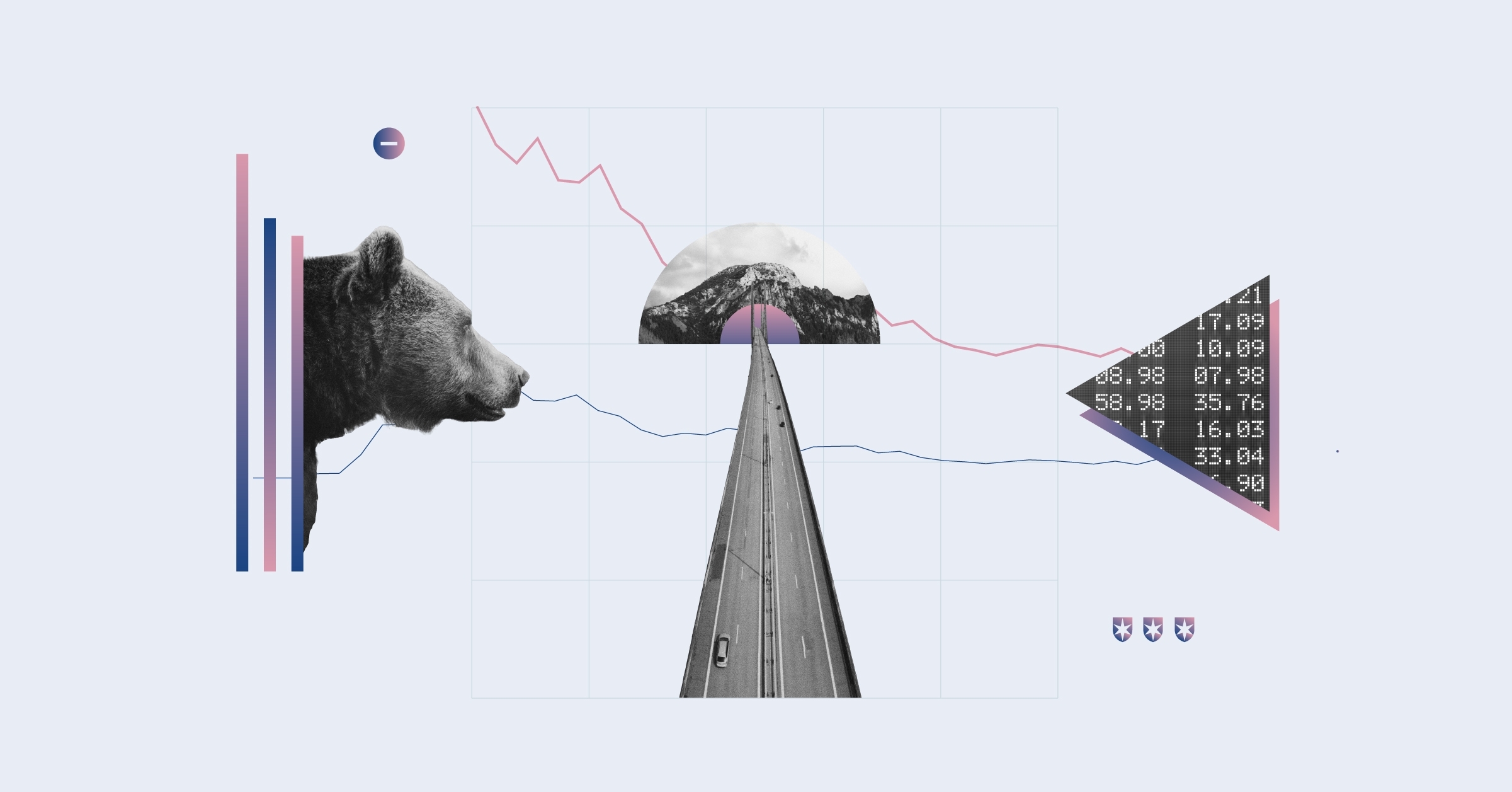Jeremy Glaser: For Morningstar, I'm Jeremy Glaser. There has been no shortage of academic contributions to the investing world finding ways for investors to maximize their returns. I'm here with Alex Bryan, he is our director of passive research here in North America, to look at some of these academic effects that maybe don't translate quite so well into the real world.
Alex, thanks for joining me.
Alex Bryan: Thank you for having me.
Glaser: Let's start with Fama-French Value Factor. This is one of the most famous. Can you talk just a little bit about what this research was and why investors haven't quite seen the full effects that Fama and French saw?
Bryan: Sure. So, Fama and French back in 1992 formally documented this effect where stocks that are trading at low valuations, specifically low price-to-book, have tended to give you higher returns than stocks that were trading at higher multiples. Now, practitioners have known this for quite some time. It was just discovered in the academic world about 25 years ago.
But anyway, the way that they constructed this factor is they ranked all U.S. stocks on the New York Stock Exchange, the NASDAQ, and the NYSE based on their price-to-book ratios and they sorted the stocks that traded at the lowest price-to-book into the value bucket. The highest 30% of stocks in the market went into the growth bucket. And then they tracked the performance of the cheap stocks, the value stocks relative to the growth stocks over the next year, and then they repeated that sorting process.
The way that they've constructed this portfolio is very different than the way that most actual investment strategists go about it, because they went by the number of stocks in the market. So, they are targeting the 30% of stocks that are trading at the lowest valuations, whereas most indexes, they are not looking for a certain number of stocks. They are looking to provide a certain coverage of the market. So most value and growth indexes try to cover about half of the market capitalization out there. The Fama-French factor gives you this bit of an imbalance where you're really going to a more extreme section of the market with the value bucket than you would with a traditional value index. So, it's very different from that way that most funds are actually being constructed.
Glaser: If it's being constructed differently, how big is that performance gap then?
Bryan: It's substantial. So, there's a few reasons for that. One, like I mentioned, the value factors that they constructed are a bit more extreme in its tilt than most actual index funds. But they also gave a lot--they gave equal weight to small-cap stocks the same weight that they have given to large-cap stocks. So, historically, the value effect has worked the best among the smallest stocks. And in the way that they constructed their portfolio, they give the same weighting to small-cap value stocks as they do to large-cap value stocks. So, if you look at the last 50 years of performance or so that academic factor returned about 3.7% annualized. Now, value and growth indexes don't go back that far. But from what we have for the Russell 1000 Value and Growth, that goes back to 1978, the 1000 Value Index outperformed its growth counterpart by about 1.1 percentage points annualized. It's quite a big difference from that 3.7% outperformance that you saw from the academic factors. So, there's a bit of slippage that you can see.
Glaser: Let's look at profitability, another academic or another factor that academics care for quite a bit. What have we seen in terms of the gap for that factor?
Bryan: So, this is newer one that was actually just discovered, so to speak, in the academic literature within the last decade. And it basically has documented this effect where stocks that are more profitable--either if you look at gross profitability, margins, or if you use a different measure of profitability--the more profitable stocks have tended to outperform their less profitable counterparts, particularly during market downturns. There's a couple of different explanations as to why that is. But this effect appears to be about as robust as the value effect that we've known about for quite some time. So, that's pretty interesting research and it jibes with the way that a lot of practitioners had thought about investing for quite some time.
Glaser: And then how have index providers or practitioners tried to put this into practice?
Bryan: So, most providers, they don't look solely at profitability. They are looking at broader measures of quality. So, here at Morningstar, we look at quality, using economic moats, for example. The most or one of the biggest indexes that does this is created by MSCI. They look at three measures of quality. One, return on equity, which is a measure of profitability. But they also look at the strength of the balance sheet, so looking at the debt to capital ratio. And then finally, they are looking at the consistency of earnings growth, so looking at stocks that are able to consistently grow their earnings over time. Directionally, you still end up getting more stocks that are more profitable, but the way that you're getting there is not the same as the way that the academic world has looked at that effect.
Glaser: Looking at momentum then, what's the difference between kind of the way that academics think about momentum and the way that if you buy, say, a momentum fund you're going to get access to that?
Bryan: So, momentum is really interesting because on paper, it's the highest returning factor of all the ones that academic researchers have documented. The problem is, in practice, momentum is a very high turnover strategy that can be difficult to actually implement net of transaction costs. So, on paper, the way that the academic community has defined momentum is they rank all stocks based on their returns over the past year, excluding the most recent month to take into account a short-term reversal over that period. And then they target the stocks with the best returns over that period, hold for one month, and then they rebalance next month. So, it's a very simplistic strategy, but it's one that has high turnover and that can create high transaction costs.
In order to deal with this reality of the transaction costs actual fund providers out there that use momentum they adapt this strategy a little bit to try to reduce turnover. So, they apply either some sort of buffering rules to reduce unnecessary turnover or they look at actually explicitly estimating what their costs are to trade. So, the fund that I'm thinking of is the AQR Large Cap Momentum Fund. And there they use a couple of different metrics to look at momentum. So, one, they are looking at that same price/return metric that the academic community is using. But they use some others as well. They try to add their own alpha, so to speak, to the approach.
But what's really interesting about this fund is that for most of its life the academic momentum factors actually outperformed by about 2 percentage points annualized from 2009 till October of 2016, and that's the period that the fund was around. Now, this fund actually underperformed the Russell 1000 Index over that horizon. So, even though on paper momentum gave you a positive return, this fund still hasn't seemed to capture that benefit for its investors. It does have exposure to the effect. So, it is doing what it says it's doing. But when you actually look at the differences between how that portfolio is constructed and how the academic factor is constructed, I think that's the source of that slippage in returns.
Glaser: This begs the question then, if these gaps between what the academics were able to construct and what you can actually buy are sometimes pretty large, does it make sense to really be looking at these factors? Or should you just buy market cap-weighted index and kind of be done with it? Is there still a case for factor investing?
Bryan: So, I think, there is still a case for factor investing. What's really nice about academic research is that it's subject to a lot more scrutiny than industry research. So, I would give more weight to what the academic community has found than what a big fund provider might come up with.
Now, that being said, it's important to realize that there are big differences between how the academic world thinks about these factors and how they construct these portfolios and the way that actual fund providers go about it. So, what I would look for are strategies that are capturing the essence of what's been documented in the academic literature. So, funds that are--if you're trying to capture the value factor, look for funds that are actually doing that. Are they targeting the cheapest sleeve of the market? Are they, if you look at the price-to-earnings, price-to-book ratios, is it materially lower than the market? It's important to look at those characteristics.
But it's also important to understand that while these funds may actually still benefit from those tilts, they're probably not going to be able to capture the same magnitude of outperformance that's been documented in the literature. So, it's important to set your expectations appropriately, right? So, I may believe that there's a benefit to overweighting stocks that are cheap or that have high profitability, but I certainly would not expect to be able to get the same type of outperformance that you've seen being published in these papers.
Glaser: Alex, thanks for joining me today.
Bryan: Thank you for having me.
Glaser: For Morningstar, I'm Jeremy Glaser. Thanks for watching.






















